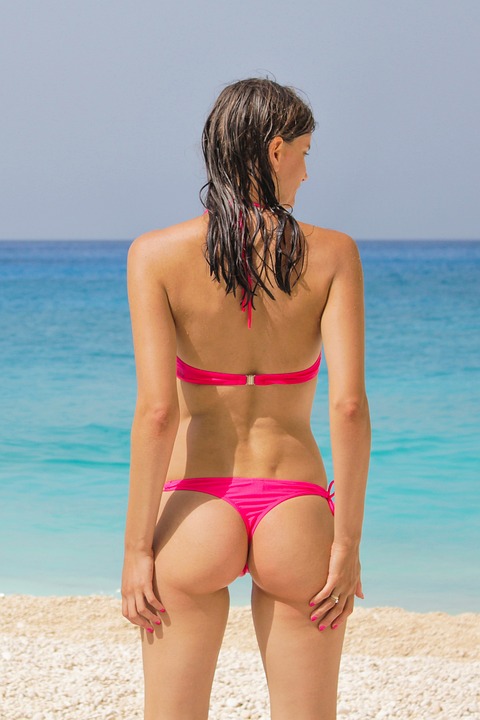Bikini Wax FAQ: Everything You Need to Know
If you’ve considered getting a Bikini Wax but have some unanswered questions, you’re not alone. Many people have reservations and doubts when it comes to this intimate grooming procedure. In this article, we will address the most frequently asked questions about Bikini waxes, providing you with all the information you need to make an informed decision. So, let’s dive in and demystify the world of Bikini waxes!
1. What is a Bikini Wax, and how does it work?
A Bikini Wax is a hair removal method that involves removing unwanted hair from the Bikini area using hot Wax. The process typically starts by applying warm Wax to the desired area and then covering it with a cloth strip. After a few seconds, the strip is quickly pulled off in the opposite direction of hair growth, removing the hair from the root. This method ensures a smoother and longer-lasting result compared to shaving.
2. Are there different types of Bikini waxes?
Yes, there are different types of Bikini waxes that vary in the amount of hair removed and the level of exposure. Here are some common types:
– Basic Bikini Wax: This type removes hair from the Bikini Line, ensuring tidy edges.
– Extended Bikini Wax: In addition to the Bikini Line, this type removes more hair from the sides and top, leaving a narrower strip.
– Brazilian Wax: A Brazilian Wax removes most, if not all, of the hair from the front, back, and everything in between, leaving only a small strip or triangle.
– Hollywood Wax: Similar to a Brazilian Wax, a Hollywood Wax removes all hair, leaving you completely bare.
3. How long does hair need to be for a Bikini Wax?
To achieve the best results, your hair should be at least a quarter of an inch long. This allows the Wax to grip the hair effectively and remove it from the root. It’s essential to avoid trimming or shaving the hair before your appointment, as this may make it too short for effective waxing.
4. Is Bikini waxing painful?
While everyone’s pain tolerance varies, it’s normal to experience some discomfort during a Bikini Wax. However, many people find the pain to be tolerable and well worth the results. To minimize discomfort, it’s recommended to schedule your waxing appointment after your period, as your pain threshold tends to be higher during that time. Additionally, taking a pain reliever half an hour before your appointment can help reduce any potential discomfort.
5. How long do the results of a Bikini Wax last?
The results of a Bikini Wax typically last between three to six weeks, depending on your hair growth cycle. Unlike shaving, which only removes hair at the surface level, waxing removes hair from the root, resulting in slower regrowth. However, factors such as hormone levels, genetics, and individual hair growth patterns can affect how quickly your hair regrows.
In conclusion, Bikini waxes are a popular hair removal option that provides longer-lasting results compared to shaving. By understanding the different types of Bikini waxes, the ideal hair length, and managing expectations regarding discomfort, you can make an informed decision about whether a Bikini Wax is right for you. Remember, it’s always best to consult with a professional esthetician who can address any specific concerns or questions you may have. So why not give it a try and enjoy the benefits of a well-groomed Bikini area?
Common Inquiries Regarding Bikini Wax Faq
What is a Bikini Wax?
A Bikini Wax is a form of hair removal procedure in which unwanted hair from the Bikini area is removed using hot Wax. The Wax is applied to the desired area and then quickly pulled off, taking the hair along with it. This process helps to achieve a smooth and hair-free Bikini Line.
Three important pieces of information about Bikini waxing are:
1. Bikini waxing involves using hot Wax to remove unwanted hair in the Bikini area.
2. The Wax is applied and then quickly pulled off to remove the hair.
3. This procedure helps to achieve a smooth and hair-free Bikini Line.
How long does a Bikini Wax last?
The duration of a Bikini Wax can vary from person to person, as it depends on factors such as the individual’s hair growth cycle and the technique used by the esthetician. On average, a Bikini Wax can last anywhere from two to four weeks before hair starts to regrow.
Three important pieces of information about the duration of a Bikini Wax are:
1. The duration of a Bikini Wax can vary from person to person.
2. Factors such as hair growth cycle and technique used can influence how long the results last.
3. On average, a Bikini Wax can last anywhere from two to four weeks.
Does Bikini waxing hurt?
Bikini waxing can cause some discomfort, as the process involves removing hair from the root. However, the level of pain experienced can vary from person to person. Some individuals may find Bikini waxing to be more uncomfortable than others, especially during their first few sessions. However, with regular waxing, the discomfort tends to decrease over time.
Three important pieces of information about the pain associated with Bikini waxing are:
1. Bikini waxing can cause some discomfort due to hair removal from the root.
2. The level of pain experienced varies from person to person.
3. The discomfort tends to decrease with regular waxing sessions.
How long should the hair be for a Bikini Wax?
To achieve optimal results, it is recommended that the hair in the Bikini area should be at least a quarter of an inch long. This allows the Wax to grip the hair properly for effective removal. If the hair is too short, the Wax may not be able to adhere to it, resulting in unsatisfactory results. It is important to avoid shaving or trimming the hair too short before a Bikini waxing session.
Three important pieces of information about the hair length for a Bikini Wax are:
1. The hair in the Bikini area should be at least a quarter of an inch long for optimal results.
2. If the hair is too short, the Wax may not be able to grip it properly.
3. Shaving or trimming the hair too short before a Bikini waxing session should be avoided.
What are the potential side effects of Bikini waxing?
While Bikini waxing is generally considered safe, there are some potential side effects that individuals should be aware of. These can include redness, skin irritation, ingrown hairs, and even allergic reactions. It is important to follow proper aftercare instructions provided by the esthetician to minimize these risks and ensure proper healing of the skin.
Three important pieces of information about the potential side effects of Bikini waxing are:
1. Potential side effects of Bikini waxing may include redness, skin irritation, ingrown hairs, and allergic reactions.
2. Proper aftercare instructions should be followed to minimize these risks.
3. Following proper aftercare helps to ensure proper healing of the skin after Bikini waxing.
1. Bikini waxing is only for women
Despite the common belief, Bikini waxing is not limited to women. Men can also opt for Bikini waxing to remove unwanted hair in the pubic area. In fact, many men choose to get Bikini waxes for various reasons, such as hygiene, aesthetic preferences, or to enhance their performance in sports like swimming or cycling. It is essential to understand that Bikini waxing is a personal choice and not exclusive to any gender.
2. All Bikini waxes are the same
Another common misconception is that all Bikini waxes are identical. In reality, there are different types of Bikini waxes available, each with its own level of hair removal. The most common types include the basic Bikini Wax, which removes hair outside the underwear Line, and the Brazilian Wax, which removes all hair from the pubic area. Additionally, there are variations like the French Wax, which leaves a small strip of hair, and the Hollywood Wax, which removes all hair from the pubic area, including the buttocks. It’s important to communicate your preferences and desired outcome with your esthetician to ensure you receive the appropriate Bikini waxing treatment.
3. Bikini waxing is extremely painful
While it is true that Bikini waxing involves pulling out hair from the root, it’s a misconception that it is excruciatingly painful. The level of discomfort experienced during a Bikini Wax varies from person to person, depending on their pain tolerance and the sensitivity of their skin. Some individuals may experience mild discomfort, while others may find it more uncomfortable. However, estheticians are trained to minimize discomfort and often use techniques like applying pressure to the area immediately after waxing to alleviate any pain. It’s important to communicate your concerns with your esthetician so they can ensure your comfort throughout the process.
4. Bikini waxing can cause permanent damage to the skin
There is a misconception that Bikini waxing can cause permanent damage to the skin. While it is true that improper waxing techniques or inadequate aftercare can lead to temporary skin irritation, ingrown hairs, or redness, these issues are typically short-lived and resolve on their own. To minimize the risk of any complications, it’s crucial to choose a reputable salon with experienced estheticians who follow proper hygiene and waxing protocols. Additionally, practicing good post-waxing care, such as using soothing creams or avoiding tight clothing, can help prevent any potential skin issues.
5. Bikini waxing leads to increased hair growth
Contrary to popular belief, Bikini waxing does not cause hair to grow back thicker or coarser. The texture and growth rate of hair are determined by genetics and hormonal factors, not by the act of waxing. When hair is removed from the root through waxing, it may initially grow back with a softer, tapered end, making it feel finer. Over time, as the hair grows, it may appear thicker due to the blunt end caused by shaving or trimming between waxes. However, consistent waxing can lead to a reduction in hair growth over time as it weakens the hair follicles. It’s important to note that individual experiences may vary, and factors like hormonal changes can influence hair growth patterns.


